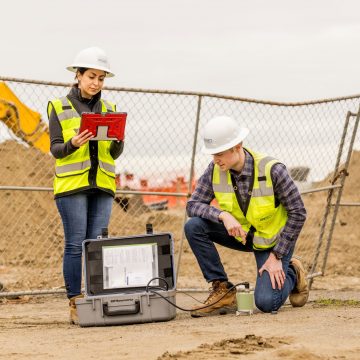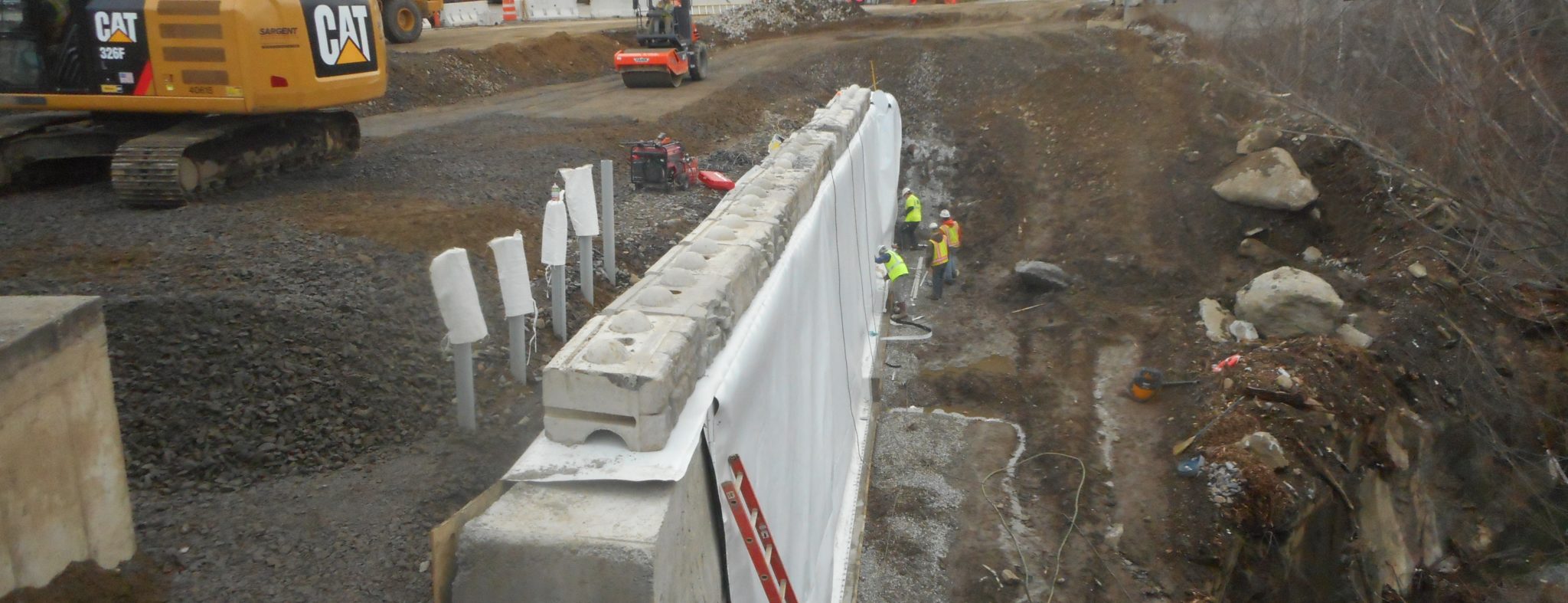Just How Geo Tech Engineers Can Address Common Soil Issues in Urban Growth
Wiki Article
Discovering the Innovative Strategies and Technologies Forming the Future of the Geotechnical Industry for Sustainable Engineering Solutions
The geotechnical market is going through a transformative shift, driven by cutting-edge strategies and modern technologies that emphasize sustainable engineering options. Advanced dirt stabilization techniques, the use of smart products, and the application of data analytics are redefining how we come close to infrastructure difficulties.Advanced Soil Stablizing Techniques
Dirt stablizing is a critical process in geotechnical engineering, aimed at improving the physical residential properties of soil to boost its load-bearing ability and toughness. Advanced soil stabilization methods play an essential duty in attending to difficulties related to unpredictable or weak dirts, thus enabling risk-free and effective construction techniques.Among the famous techniques, chemical stabilization involves using ingredients such as lime, concrete, or fly ash, which react with dirt bits to develop a more cohesive mass. This technique is especially effective in enhancing the strength and moisture resistance of extensive clay dirts. Mechanical stablizing, on the other hand, includes the physical change of dirt buildings through compaction or the incorporation of granular products, bring about enhanced thickness and security.
An additional ingenious approach is making use of geosynthetics, which provide reinforcement and decrease dirt disintegration while enhancing drainage. Techniques like dirt blending and deep soil stabilization are likewise getting traction, allowing for in-situ treatment of bothersome soils. Collectively, these sophisticated methods not only improve the performance of dirt structures however additionally add to lasting engineering methods by minimizing the need for extensive excavation and product transportation.
Smart Products in Geotechnics
Technology goes to the forefront of geotechnical design, specifically with the incorporation of clever materials that improve the performance and capability of dirt frameworks. Smart materials, such as form memory alloys, piezoelectric materials, and self-healing polymers, are changing the method engineers approach soil stabilization and framework long life (tailings engineer). These materials can adjust to transforming environmental conditions, reply to anxiety, and also repair themselves, dramatically enhancing the resilience of geotechnical systemsAs an example, piezoelectric materials can produce electrical costs in feedback to mechanical tension, providing prospective for real-time surveillance of soil problems and structural honesty. Similarly, self-healing products can autonomously repair problems and cracks, lowering upkeep costs and extending the life-span of geotechnical possessions. The assimilation of these smart materials not only improves the mechanical homes of dirt yet additionally adds to lasting engineering methods by lessening resource consumption and ecological impact.
As the geotechnical industry remains to advance, the fostering of smart materials will certainly play an essential function in establishing cutting-edge remedies, guaranteeing that frameworks are not just durable yet likewise versatile to future challenges. This transformative approach is poised to redefine the criteria of safety and efficiency in geotechnical engineering.
Information Analytics for Framework
The combination of clever materials in geotechnical design has actually led the way for sophisticated methodologies, especially in the world of information analytics for infrastructure. This innovative technique leverages considerable information collection and logical strategies to improve decision-making procedures throughout the facilities lifecycle. By utilizing sensing units installed in wise products, designers can continually monitor crucial parameters such as soil stability, moisture degrees, and architectural stability.Data analytics allows the change of raw data into workable understandings, enabling anticipating upkeep and enhanced danger management. Advanced formulas and equipment understanding techniques promote the identification of anomalies and patterns, which can inform timely interventions and optimize source allotment. Additionally, integrating geographical details systems (GIS) boosts spatial analysis, additional improving the decision-making framework.
As framework projects grow in intricacy, the reliance on data analytics becomes increasingly crucial. It promotes an aggressive method, minimizing the possibility of failures and guaranteeing the long life and sustainability of frameworks. By harnessing the power of data analytics, the geotechnical market is positioned to not just improve current techniques however also leader cutting-edge services for future infrastructure difficulties. This synergy of modern technology and design concepts will specify the future of lasting framework advancement.

Sustainable Ground Improvement Techniques
Different sustainable ground renovation approaches are becoming essential options to attend to the challenges of geotechnical engineering while minimizing ecological impact. These methods not just improve dirt performance however likewise advertise eco-friendly stewardship by lowering reliance on traditional, extra invasive methods.
One more innovative technique is the application of geosynthetics, that includes eco-friendly materials that strengthen dirt while advertising drain and disintegration control - tailings engineer. This minimizes the need for hefty machinery and minimizes website disruption, hence protecting regional ecosystems
Furthermore, methods such as dynamic compaction and vibro-replacement have advanced to include lasting practices, minimizing and integrating recycled products carbon footprints. These approaches exemplify the sector's shift in the direction of even more ecologically accountable remedies, making sure that ground improvement not just fulfills design demands however additionally adds positively to the surrounding atmosphere.
Innovations in Ecological Surveillance
In the last few years, innovations in environmental tracking have substantially boosted the capability to examine and manage geotechnical tasks with marginal environmental disturbance. Cutting-edge innovations, such as remote noticing, Internet of Points (IoT) gadgets, and real-time information analytics, are transforming how ecological effects are gauged and mitigated.Remote noticing modern technologies, consisting of satellite imagery and airborne LiDAR, help with the fast assessment of land usage changes and environmental problems - tailings engineer. These devices permit for continuous tracking of websites, enabling designers to determine prospective concerns before they rise. In addition, IoT tools, outfitted with sensing units for specifications like dirt dampness, gas, and temperature emissions, supply live information streams that boost the understanding of site-specific environmental variables
Real-time information analytics additionally fine-tune decision-making processes by incorporating information from various resources, enabling aggressive monitoring strategies. This alternative method not just makes sure conformity with environmental policies but additionally promotes lasting techniques within the geotechnical industry.
As these developments proceed to develop, they hold the potential to bridge the space in between design purposes and ecological stewardship, promoting an extra lasting future for geotechnical jobs worldwide.
Conclusion
Advanced dirt stablizing approaches, the combination of clever products, and the application of information analytics jointly improve the durability and effectiveness of facilities. These developments not only address contemporary engineering challenges but additionally lead the means for an extra lasting future in geotechnical methods.Strategies like soil mixing and deep dirt stabilization are also obtaining grip, allowing for in-situ therapy of troublesome soils. Jointly, these sophisticated techniques not only boost the performance of dirt frameworks but additionally add to lasting engineering techniques by lessening the need for extensive excavation and product transport.

Report this wiki page